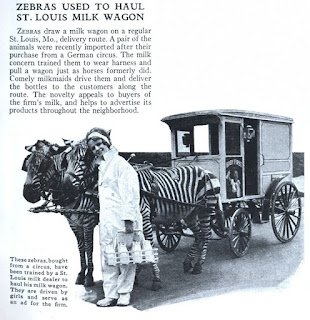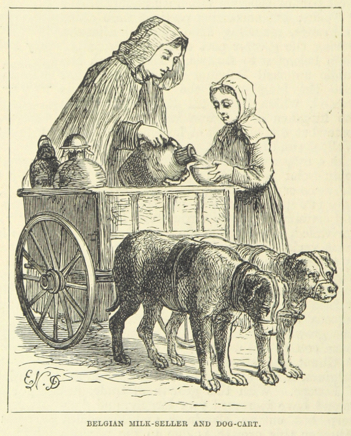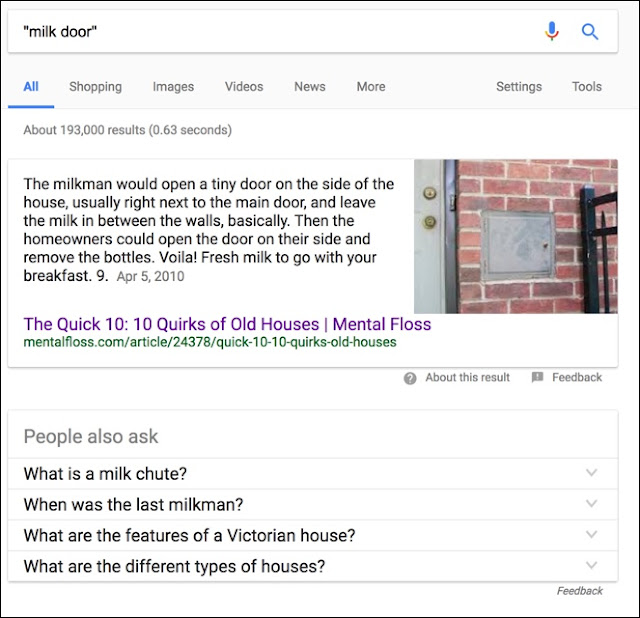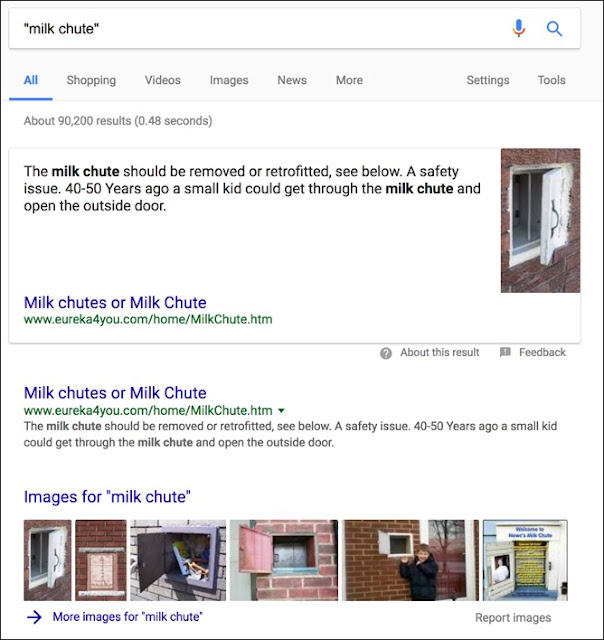… is an incredibly complex fluid that’s produced by the mammary glands of mammals shortly after pregnancy. It’s an emulsion of butterfat globules in a water-based fluid filled with dissolved carbohydrates, protein aggregates, and minerals. Milk that’s produced early in the milk production cycle contains colostrum, with lots of antibodies, protein and fat to help the infant thrive early on.
 |
| (A generic Wisconsin dairy–not my family’s farm.) |
But I was primarily interested in how milk made it from dairies to the home.
Usually, the milkman would drive up in a milk truck to leave it on the doorstep, but the really nice houses had a kind of built-in receptacle to hold the milk and keep it out of the sun.
It’s clear that milk trucks weren’t the only way for milk to be delivered. I’d had this dog-cart image in my files for a while, and that begins this week’s Challenge.
Then there’s the matter of how milk is contained for shipment.
1. These milk containers: Do they have a specific name? If I want to buy one, what term or name would I search for? Is it possible to buy new ones? 
A milk churn is a tall, conical or cylindrical container for the transportation of milk. It is sometimes referred to as a milk can.
2. As I said above, some houses had a kind of mini-closet into which the milkman would put the day’s delivery: What was that mini-closet called?
This is a bit tricky. I started with the query:
 |
| Sampler of Indian dog travois |
 |
| P/C: Modern Mechanix, July 1931 |
 |
| Pigs pulling a milk cart. P/C: Washington State Creamery |
4. Milk generally comes from cows, and we have a lot of them in Wisconsin and California. But what other animals produce milk that’s widely used as human food? That is, I know whales produce milk too, but it’s not really a common food item. Which kinds of animal milk is used as a food product? (Extra credit just for fun and a surprise: Which four states are the top milk producers in the US?)
[ animal milk human drink ]
Search Lessons
Search on!












